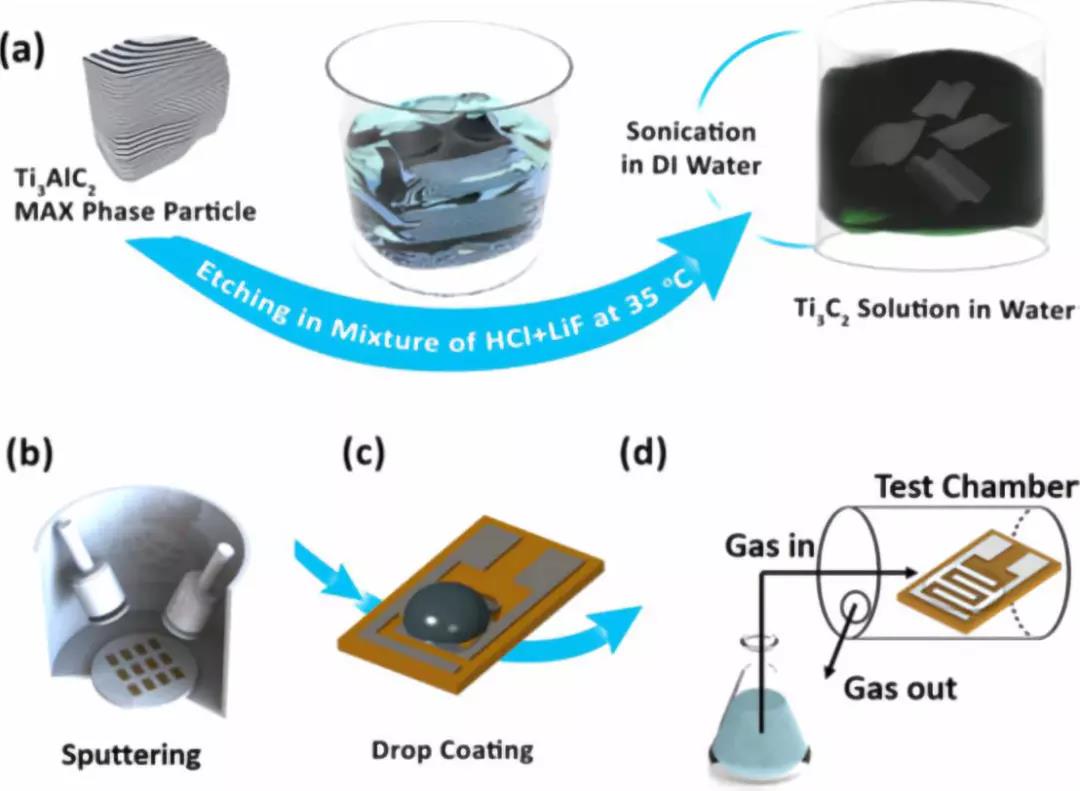MXene room temperature gas sensor
QQ Academic Group: 1092348845
Detailed

【Research Background】
Prevention is the best way to treat a disease. Early detection before the disease worsens is likely to provide more treatment opportunities, thereby increasing the likelihood of patient survival. One direction of early prevention is continuous physiological monitoring of the human body from breathing, heart rate and skin. It is worth noting that about 200 compounds have been detected in human breathing, some of which reflect the health of the body. Therefore, the use of gas detection and associated respiratory analysis will be a practical medical approach. At the same time, these gas sensors should be equipped with other functions such as portability, wearability, flexibility and so on. However, existing conventional gas sensors are fabricated on a solid substrate and thus cannot be made into wearable electronic devices. At the same time, commercial metal oxide sensors are now unable to operate at room temperature. Therefore, it is necessary to develop new materials with good room temperature sensing properties on flexible substrates. Two-dimensional materials are theoretically predicted to have good room temperature gas sensing properties.
[Introduction]
In 2017, Professor Dong-Joo Kim of Auburn University reported the first gas sensor based on Ti3C2Tx. They used the sensor to test ethanol, methanol, acetone and ammonia at room temperature. It provides a new direction for the application of Ti3C2Tx in sensors. This work was published online at: ACS Applied Materials & Interfaces: Room Temperature Gas Sensing of Two-Dimensional Titanium Carbide (MXene)
[Graphic introduction]
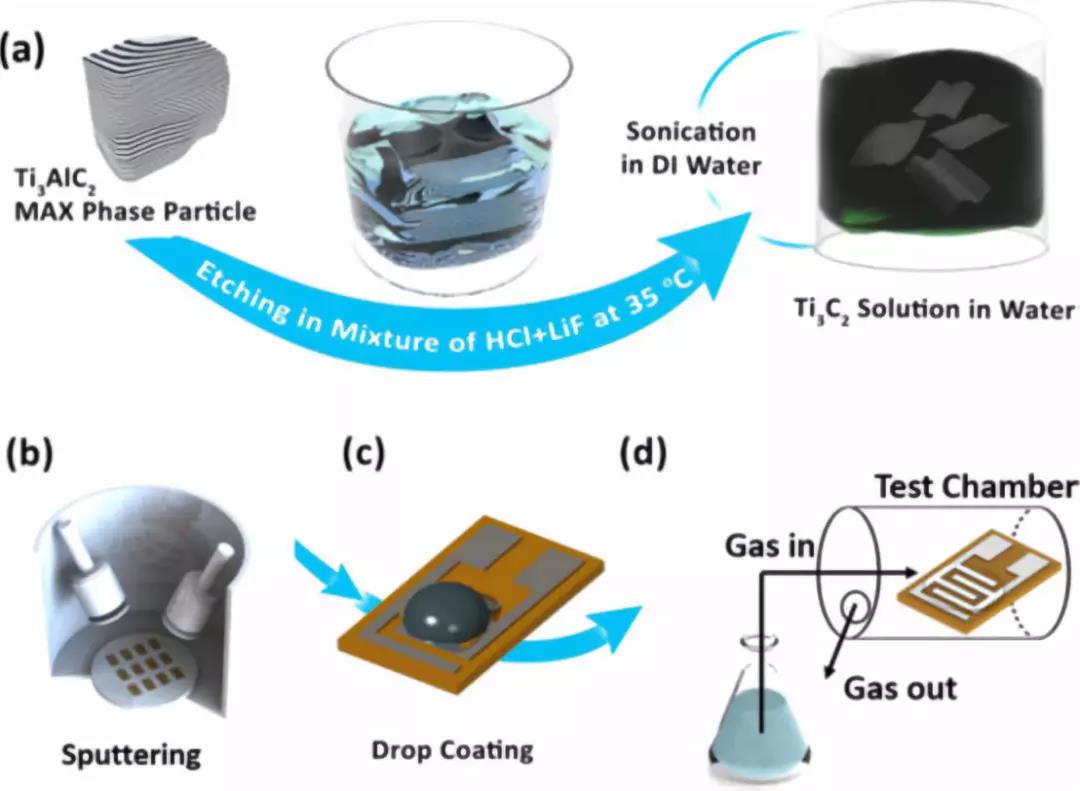
Figure 1 Schematic: (a) Ti3C2Tx synthesis process, (b) electrode sputtering, (c) solution deposition process, (d) gas sensing equipment.

Figure 2 (a) Schematic diagram of the surface structure and different functional groups of Ti3C2Tx nanosheets, (b) (i) XRD pattern of Ti3AlC2 before etching and (ii) Ti3C2Tx film after selective removal of Al from MAX phase structure, showing MAX The phase peak disappears and the (002) peak shifts to a smaller angle.
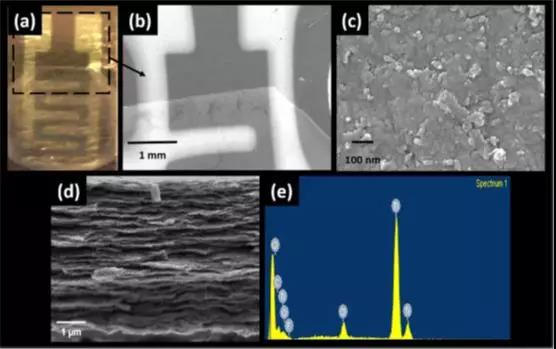
Figure 3. Morphological characteristics of the Ti3C2Tx film. (a) an optical image of the entire Ti3C2Tx sensor platform, (b) an SEM image of the dried Ti3C2Tx film on the interdigitated platinum electrode deposited on the flexible polyimide film, and (c) an enlarged coated Ti3C2Tx film, ( d) cross-sectional view of the film, (e) EDS analysis of the film.
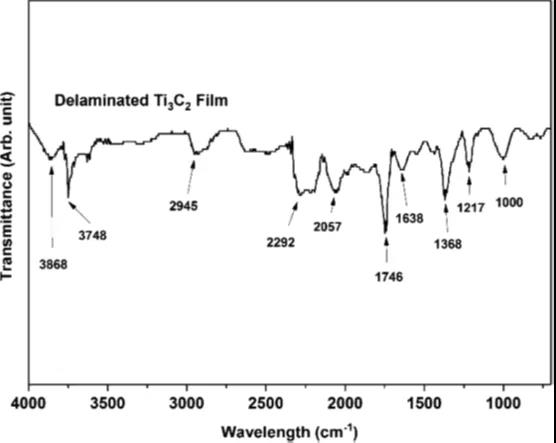
Figure 4 FTIR spectrum of layered Ti3C2Tx.
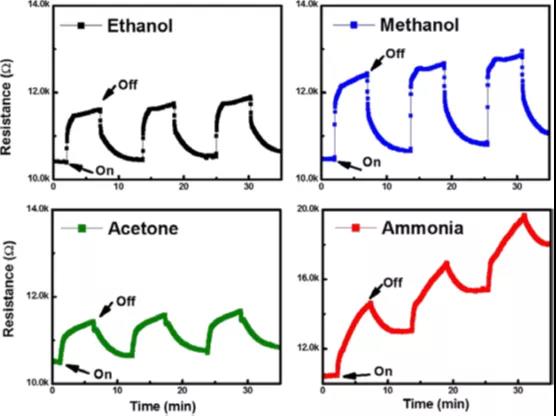
Figure 5. Gas sensing results of Ti3C2Tx sensor for 100 ppm ethanol, methanol, acetone and ammonia at room temperature.
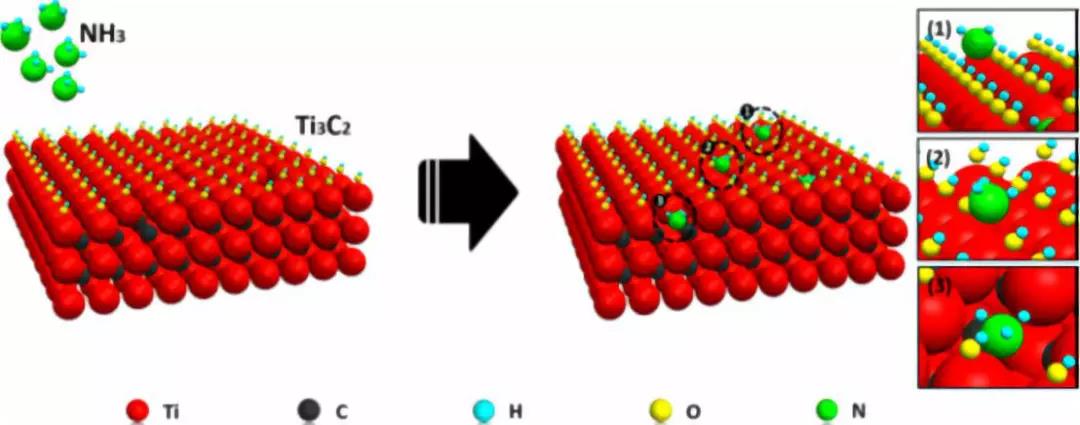
Fig. 6 Schematic diagram of possible adsorption of ammonia by Ti3C2Tx
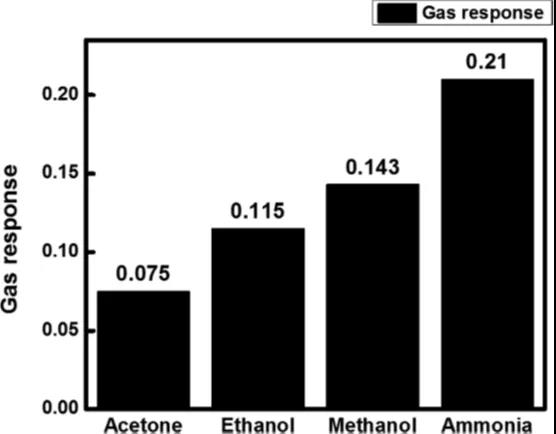
Figure 7 shows the calculation of the average gas response for each gas in this study.
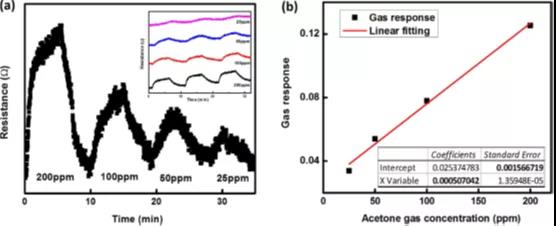
Figure 8 (a) Ti3C2Tx sensor resistance curve as a function of ammonia concentration, (b) relationship between acetone concentration and gas response.
[Summary of this article]
This study demonstrates for the first time the ability of Ti3C2Tx to detect a range of VOC gases at room temperature. The synthesized Ti3C2Tx nanosheets were prepared on a flexible polyimide film by a convenient solution casting method, and the surface chemistry was investigated. The Ti3C2Tx sensor successfully detected all VOC gases tested, such as ethanol, methanol, acetone, ammonia, etc. at room temperature, exhibiting p-type sensing behavior. Because the Ti3C2Tx sensor has a large absorption energy, it has a high sensing response to ammonia. According to the majority of charge carrier transfer caused by the interaction between the sensing material and the sensing material, the possible sensing mechanism of the sensor is proposed. The new Ti3C2Tx gas sensor will be the next generation of universal sensors for future wearable electronics, with performance comparable to other 2D material sensors.
Literature link:
https://doi.org/10.1021/acsami.7b11055
Source: WeChat public number :MXene Frontier
- Previous: High performance MQW p
- Next: 1


 About us
About us
